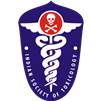Pattern and Outcome of Poisoning Cases analyzed in Poison Detection Centre of a Tertiary Care Hospital: A 3 year Retrospective Study
Keywords:
Somashekhar S. Pujar1, Kashif Ali2#,Ravindra S. Honnungar3, Prasanna S. Jirli4, Khaja Azizuddin Junaidi5, Pushpa M.G.6Abstract
Introduction: Poisoning is a problem throughout the world but its pattern vary from one place to other place. The deaths due to poisoning can be intentional or unintentional. The deaths due to poisoning is increasing at an alarming rate in developing countries like India because a large number of pesticides
are easily accessible to the people with the development in industrial and agricultural fields.
Objectives: To know the pattern and outcome of poisoning cases admitted in a tertiary care hospital over a period of 3 years.
Materials and Methods: A retrospective record based study of all poisoning samples sent for analyzing to Poison Detection Centre (PDC) of KLE hospital, Belagavi from January 2014 to December 2016. The data regarding pattern of poisoning, age, sex, occupation, basic demographics profile and outcome were collected from hospital records.
Results: There were total 521 cases of which 426 were positive for various poisonous compounds and 95 were negative for the standard tested. Most of the poisoning cases were observed in males amounting 257 (60.3%). The commonest age group was 19-29 years (46.5%) and male to female ratio was 1.52:1. The maximum number of cases reported were among illiterate (71.8%) and were from rural background (70.6%) involved in agricultural activities (42.7%). Organophosphorus (57%) was commonest compound and least was Amitraz (1.2%). The total mortality was 39 and the maximum deaths were seen with Organophosphorus compound (66.6%).



